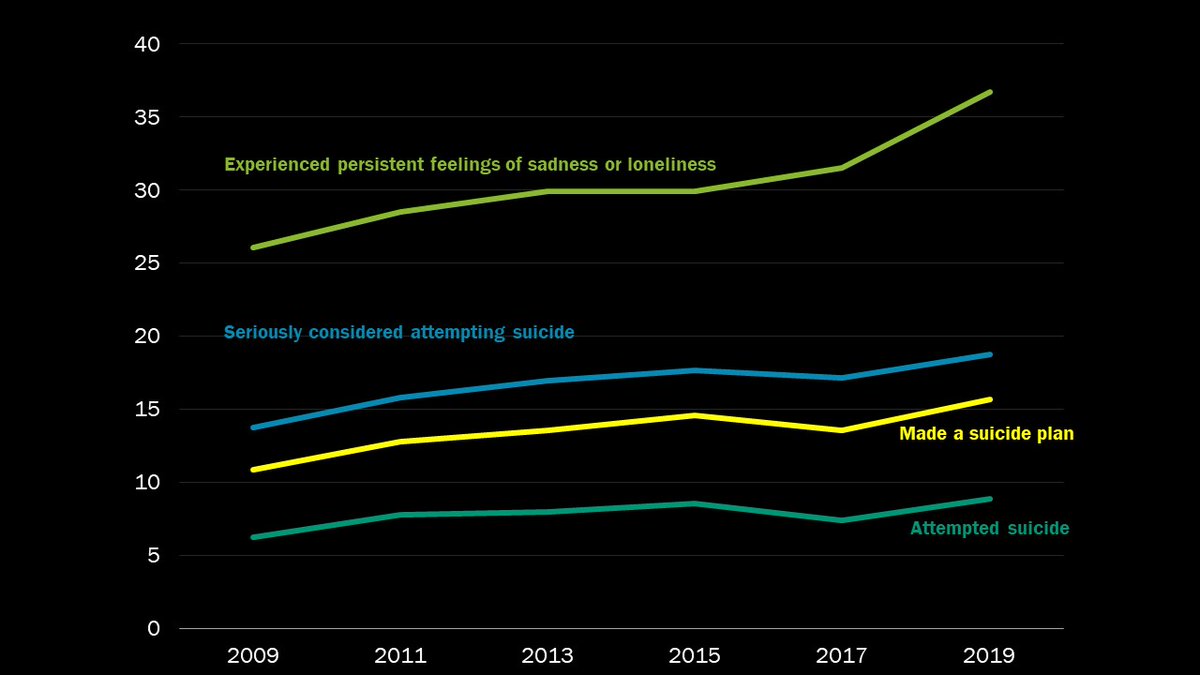
It’s #worldmentalhealthday and despite progress made around acknowledging mental health needs, suicide is still the 10th leading cause of death in the US and the 2nd leading cause of death among high-school aged youth #SuicidePrevention #ph260720
According to the @CDC_DASH Youth Risk Behavior Survey, 4 out of 5 suicide variables measured have seen an increase from 2009-2019 #SuicidePrevention #ph260720 

Suicide variables already increased pre-pandemic. Do you think emergency department visits for suspected suicide attempts among young people went up or down during 2020 & 2021? #SuicidePrevention #ph260720
Unfortunately, if you said ED visits increased during the pandemic among US youth, you’d be right according to the @CDCgov. So how do we address these trends? #SuicidePrevention #ph260720
Multisystemic therapy (MST) was originally designed to reduce days incarcerated and out of home placements for youth in the justice system, but orgs like @MST_Services and @youthdotgov have acknowledged its benefits in improving mental health #SuicidePrevention #ph260720
MST is usually an intensive family and community-oriented approach focused on one youth, but many people that work with youth work with them in large groups, like myself at the @maplewoodlibrary which pre-pandemic looked like this after school: #SuicidePrevention #ph260720 

Many of the components of MST, like finding the right fit, focusing on existing strengths, being present focused, and continuously evaluating effort and accountability can be applied at scale in a group setting with some effort and consideration #SuicidePrevention #ph260720
What do you think the key is to helping youth in a large-scale setting like a public library, a sports team, or even class or school wide? #SuicidePrevention #ph260720
New initiatives like #WorldMentalHealthDay and #letstalknyc from @jedfoundation and @MentalHealthNYC are getting at the key component to helping all teens in identifying and managing mental health issues: connection #SuicidePrevention #ph260720
One of the easiest ways to connect to teens at scale is greeting the teens in your life by name, asking them questions about their day, getting to know them, and reminding them that you are there for them #SuicidePrevention #ph260720
What will you do this #WorldMentalHealthDay to improve the mental health of our youths? #SuicidePrevention #ph260720
• • •
Missing some Tweet in this thread? You can try to
force a refresh



